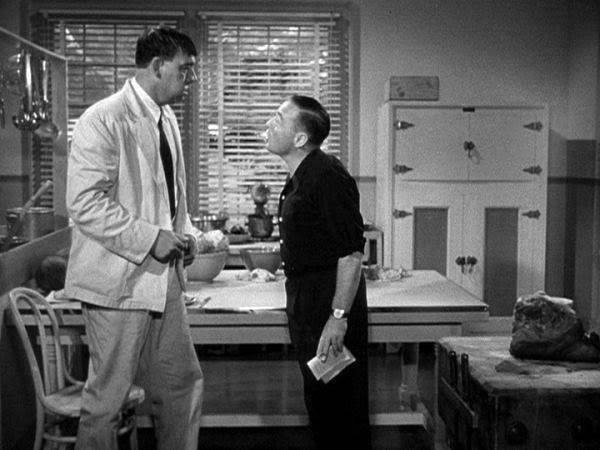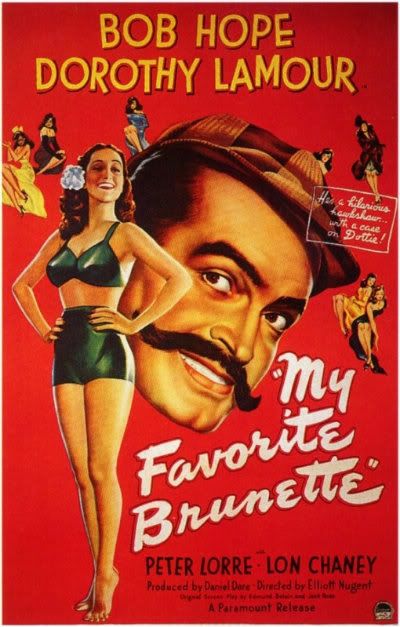
[Note the highly misleading poster art. Hope never wears anything like he is pictured here, and Dorothy Lamour certainly never appears in a bathing suit. And I seriously have no friggin’ idea what those other ladies are supposed to represent.]
Bob Hope was, save for W. C. Fields, the greatest solo film comic of the golden age of cinema. Although remembered mostly for his wonderful ‘Road’ pictures with Bing Crosby and (alas) for his ever more awful TV specials in the 1970s, back in the ‘30s and ‘40s he was as reliable a film comedian as we’ve ever had.
Indeed, his run from 1939 (Cat and the Canary) to, say, 1952 (Road to Bali) offers up a string of over 20 films that range from pretty funny to downright hilarious. Admittedly, the stuff to follow grew increasingly uninteresting, and by the ‘60s his screen stuff was pretty stale. Still, how many actors ever had that good of a run? And that’s on top of having one of the best radio comedians in the age of Jack Benny, Fred Allen and a host of others.
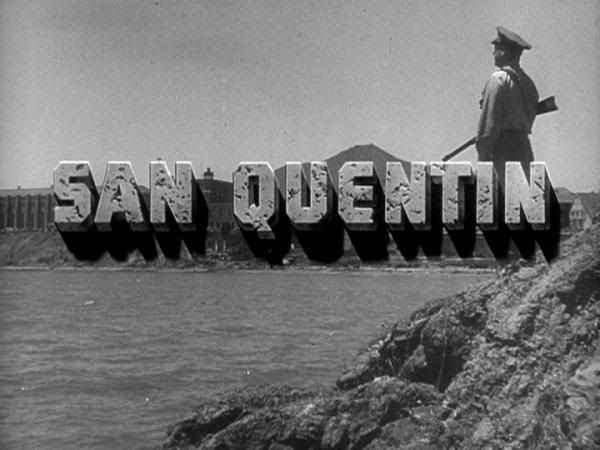
My Favorite Brunette is a top of the line effort. Hope plays Ronnie Jackson, a baby photographer who dreams of a he-man life. When we first meet him, he’s on death row and facing his imminent execution. That doesn’t sound funny, but it is. As a last request, Ronnie is allowed to tell his tale to a natter of reporters. (I’m not sure if that’s the proper collective term for journalists, but it’s good enough.) This set-up allows for the obligatory narration of a film noir / private detective picture, albeit as run through Hope’s sensibilities.
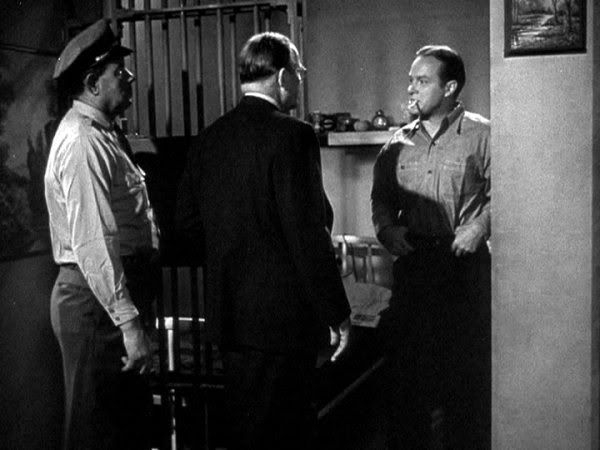
Cue the flashback. The office next to Ronnie’s is that of Sam McCloud (a gag appearance by diminutive tough guy actor Alan Ladd), the epitome of a Hollywood movie PI. Ronnie has been bugging McCloud to bring him on, but the latter naturally refuses. Ronnie has even bought a revolver. Being a detective, Ronnie narrates, “only took brains, courage, and a gun… and I had the gun.”
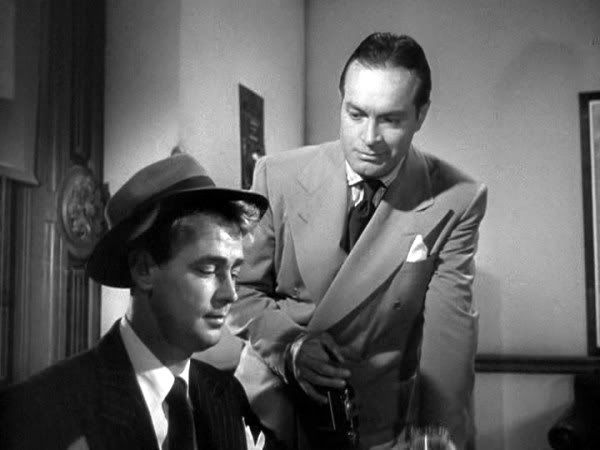
Ronnie gets his chance when McCloud leaves town. Moments later Carlotta, a gorgeous brunette in great peril (Hope’s frequent Paramount costar, Dorothy Lamour) enters McCloud’s office. Finding Ronnie there, she makes the inevitable assumption. Ronnie, finding his dream comes true, naturally goes along with the situation.
Carlotta reports being followed, and that her rich, elderly foreign husband has been kidnapped. She dare not go to the police lest he be killed. Happily, it’s during this early stage that Lorre first makes his appearance as Kismet. He’s skulking around out in the hall, and since Lorre was one of cinema’s great skulkers, it’s a good match. Lorre’s appearances could often be smaller and more inconsequential than we’d like them, but he has a nice, meaty part in this one.
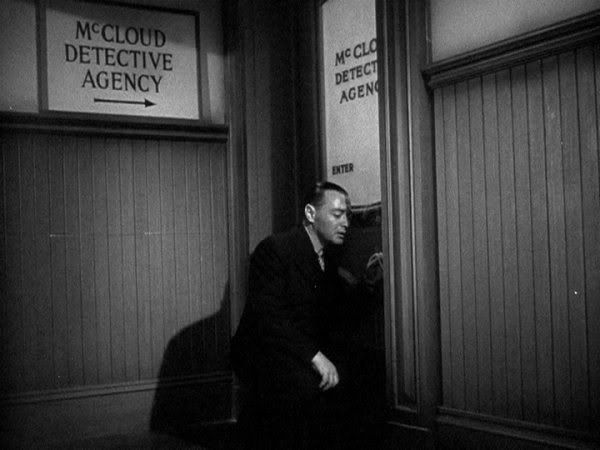
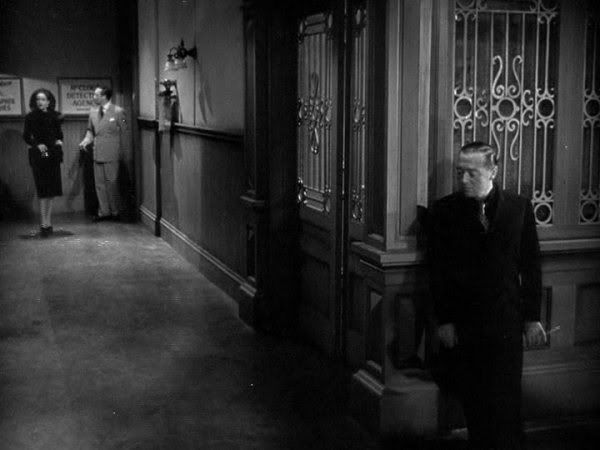
Since this is a parody of the classic noir detective films, such as 1944’s Murder My Sweet, Ronnie finds the case to be quite convoluted. He visits Carlotta at the gigantic mansion of Simon Montague, where she is staying. There he first meets Kismet, now playing the role of Montague’s majordomo. In a nice bit, Kismet manages to strip Ronnie of his shoulder holster while adjusting his jacket collar. It’s funny, but also communicates how out of his depth Ronnie is.
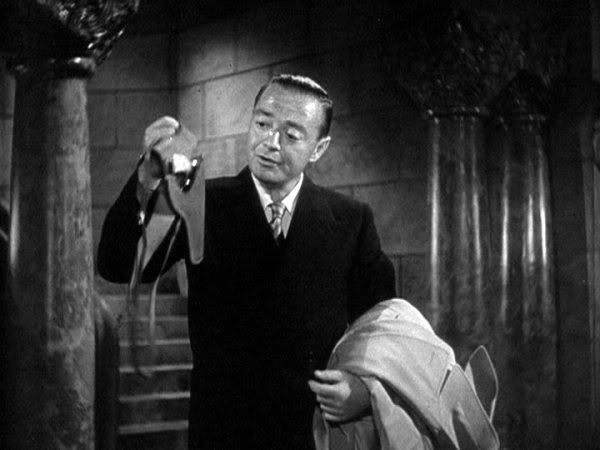
Ronnie is confused when Carlotta changes her story, now asserting that the missing man she said was her husband is in fact her uncle. Then Montague has a private talk with Ronnie, who to his great surprise finds the purportedly missing man is also in residence. He, Montague and a psychiatrist explain that Carlotta is a tad wacky. Ronnie accepts this, leading to a comic scene where he now fears for his life due to Carlotta’s rather aggressive handing of a letter opener. However, he can’t resist her charms (who can blame him?), and so he stays on the case.
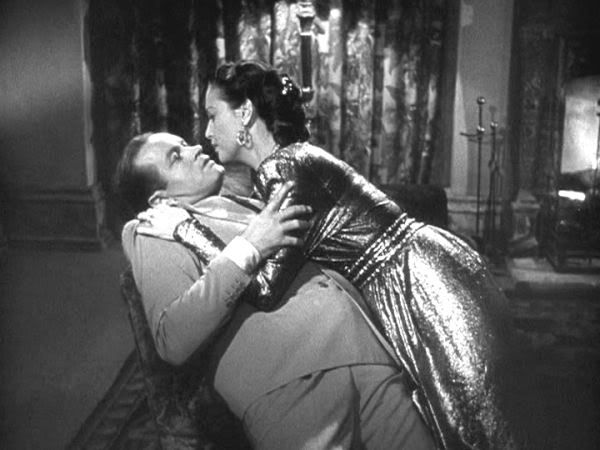
Except for Hope’s stuff, things are otherwise played pretty straight. One of the few outright comedy scenes involves Kismet trying to plant an misleading clue in Ronnie’s way. Despite the fact that Ronnie is trying to search for clues, he keeps overlooking the box no matter how obviously it is planted. Eventually Kismet is walking around in plain sight behind the oblivious Ronnie’s back, moving the object back and forth until Our Hero finally manages to notice it. It’s a pretty funny scene.
Still, one of the reasons the film is as good as it is that it’s mostly shot like an actual noir. There are location shots in the streets of San Francisco, comparatively rare for the time, but most often seen in crime pictures like The Naked City. And Lamour’s introduction is a nice moment, seen in a reflection of an article on McCloud’s desk.
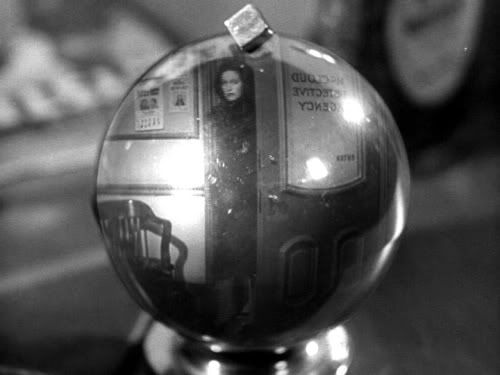
During the conference scene with Montague and the rest, the characters are classically seated under the shadow of a window frame which suggests expressionistic prison bars or spider’s web. The bit where Ronnie learns the truth by spying in a window could be out of any serious detective film of the period. And, of course, there’s the trademark fatalism of the protagonist telling his story just before being executed.
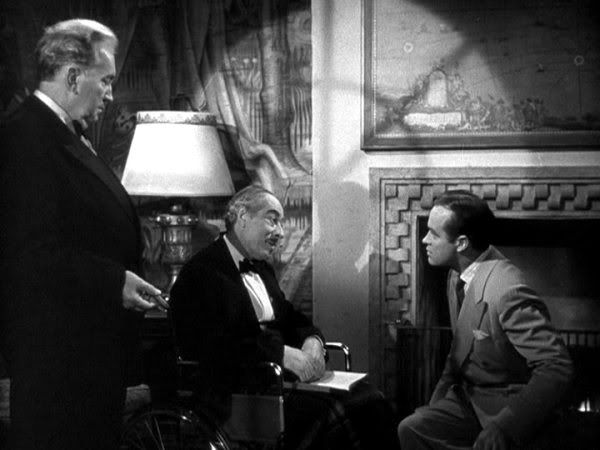
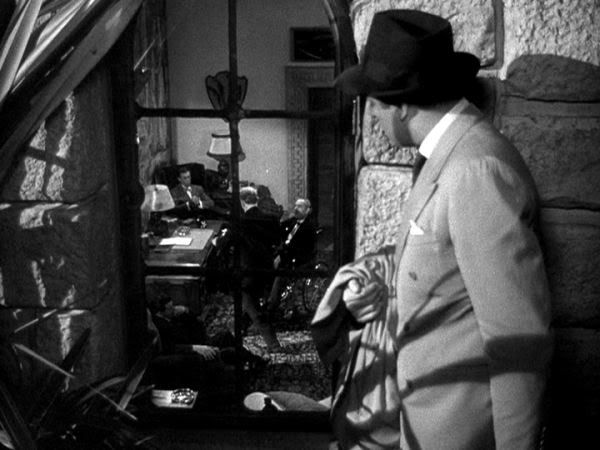
Lorre mostly plays things straight, and is even given a little side story where he’s about to take his American citizenship test. As you’d expect, he’s really good. He’s quite believable skulking about and handling a knife. He also reacts with credible yet amusing rage to Ronnie’s sarcastically nicknaming him Cuddles, again something that could be right out of a straight PI picture.
Suitably, Hope’s character isn’t quite as cowardly as usual. After all, he’s a guy who aspires to being a tough private eye. When he briefly tells Lamour he’s dropping her case, it seems less comedically fearful than just a common sense acknowledgement that this baby photographer has gotten in way over his head.
It’s hard to resist a good-looking woman wearing men’s pajamas, though–a bit also used in Hope’s The Iron Petticoat–and Ronnie is soon back on the job. (Some of Hope’s lines are amusingly risqué, including one he glosses over, presumably to get it past the censors. When the two shop so he can buy Carlotta an expensive dress, Ronnie notes, “You only get out of a thing what you put into it.”)
After the inevitable murder occurs, Ronnie pops on a disguise and quite nearly wraps things up. However, he’s outsmarted at the last minute, and hence his trip to San Quentin. Oh, and don’t miss a great bit at the end of the picture.
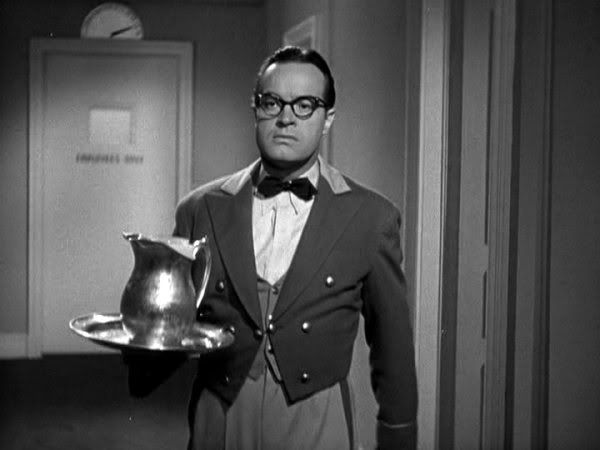
Even better for Lorre, about halfway through the film brings in Lon Chaney Jr. as Willie. A somewhat inadvertent member of Montague’s crew, Willie is unsurprisingly the 100th iteration of Chaney’s trademark dimwitted giant Lennie character. The film even acknowledges this, with Ronnie quipping, “I’ll buy you a rabbit later.” Anyway, Willie is an orderly at a sanitarium, a setting that popped up in numerous detective movies.
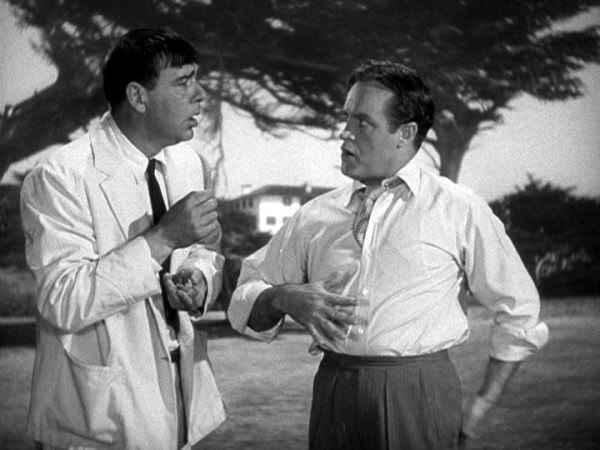
Lorre and Chaney make a terrific Mutt and Jeff team. Kismet is small, sly, soft-spoken but murderous, while Willie is huge, dumb, loud but basically kindhearted. Both actors, finding themselves in a quality picture—which clearly wasn’t always the case during this period—acquit themselves very well. The two have a lot of chemistry. It’s too bad that they wouldn’t work together again until they played themselves, along with Boris Karloff, in the “Lizard’s Leg and Owlet’s Wing” episode of TV’s Route 66. This would mark Lorre and Chaney’s second and final appearance together.
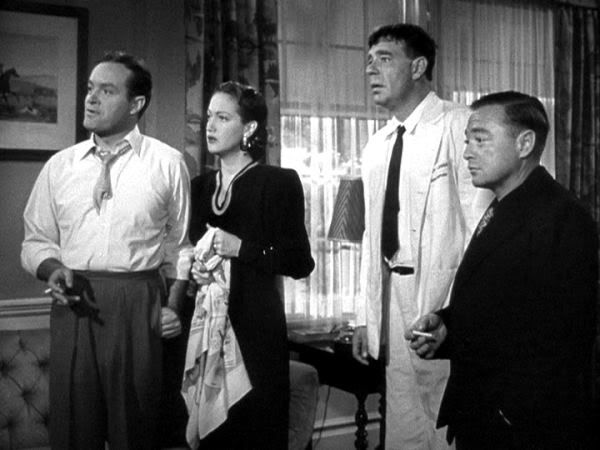
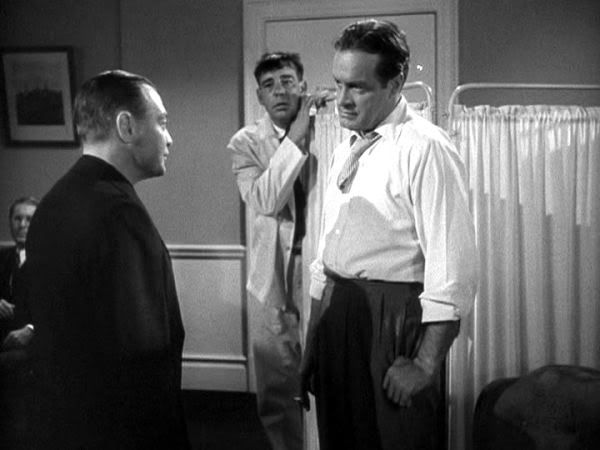

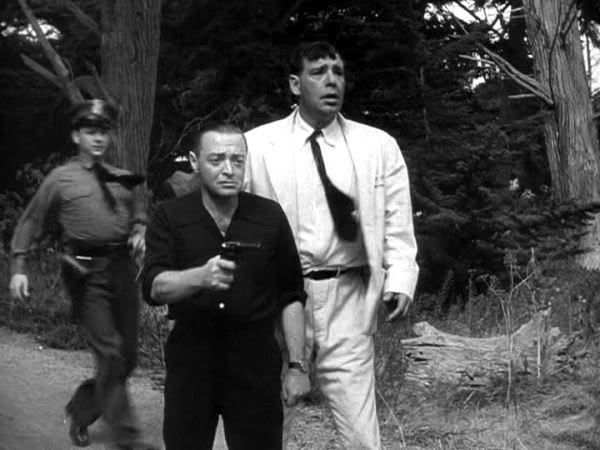
Anyway, on a Venn diagram of fans of Bob Hope, Peter Lorre and detective / noir movie fans, this film occupies the sweet spot. Highly recommended.
